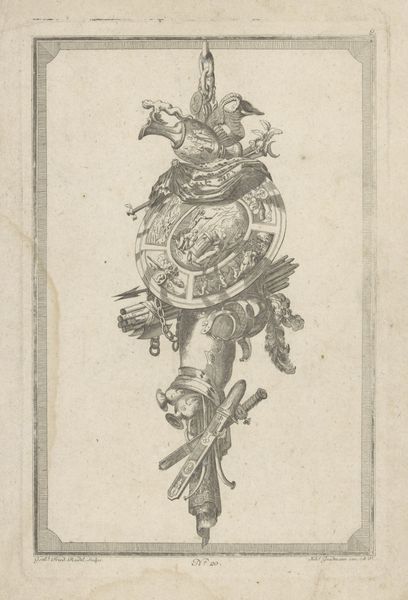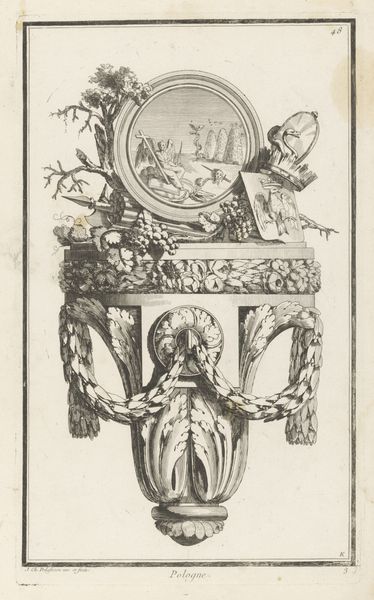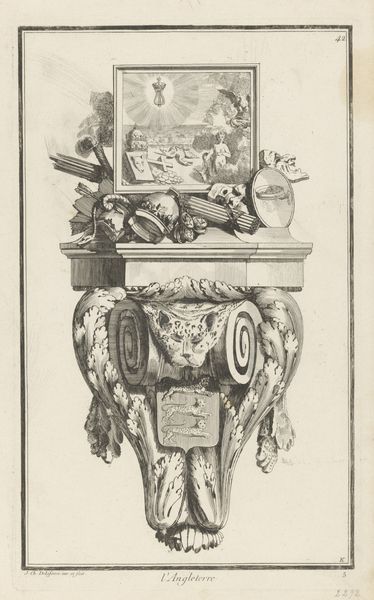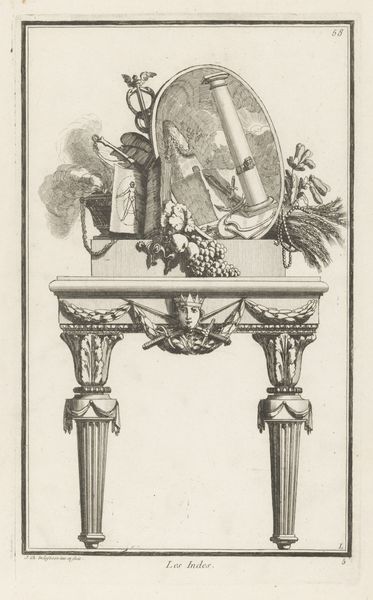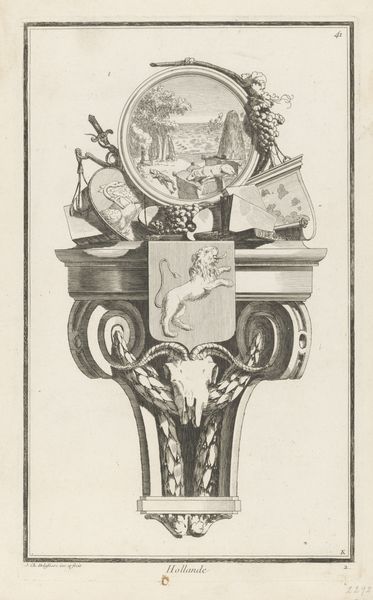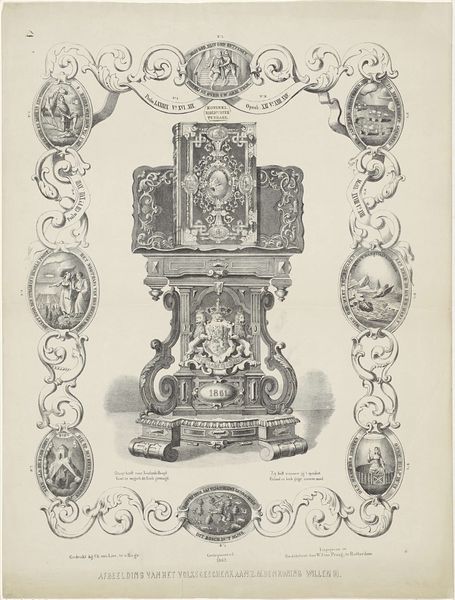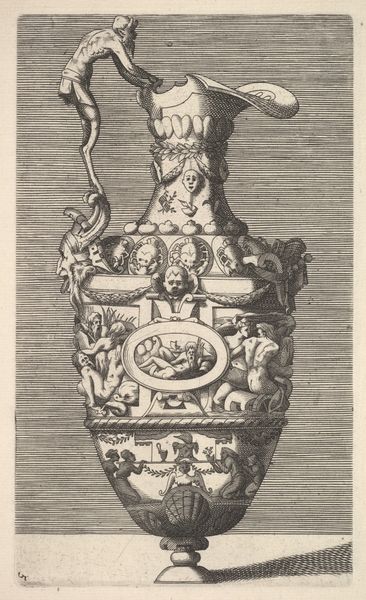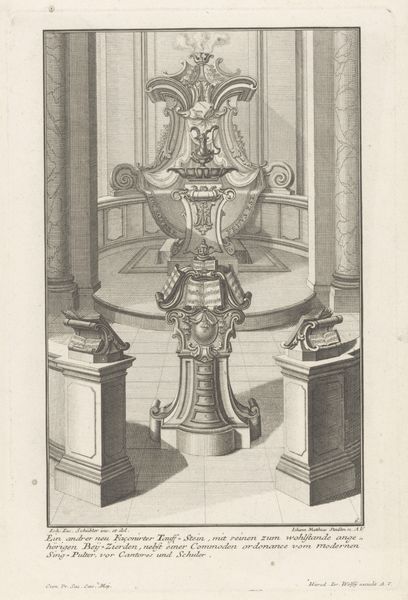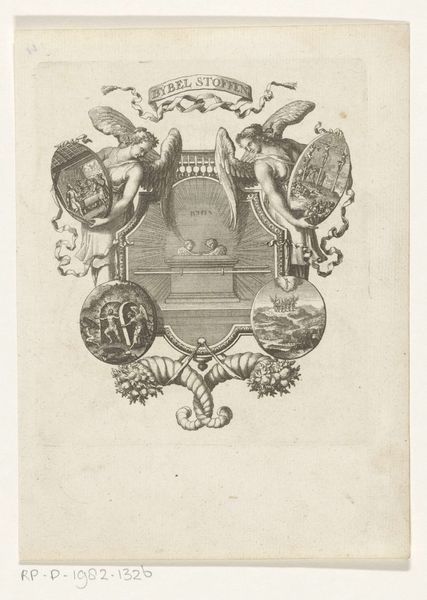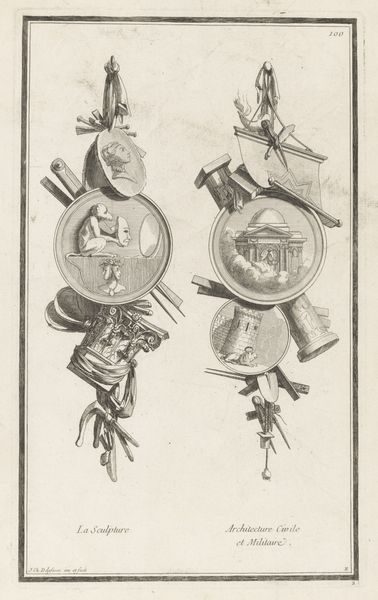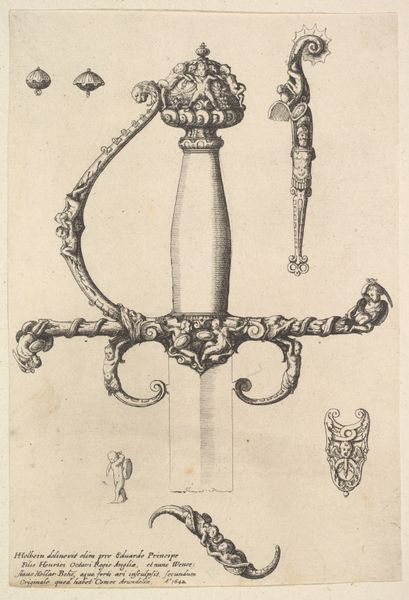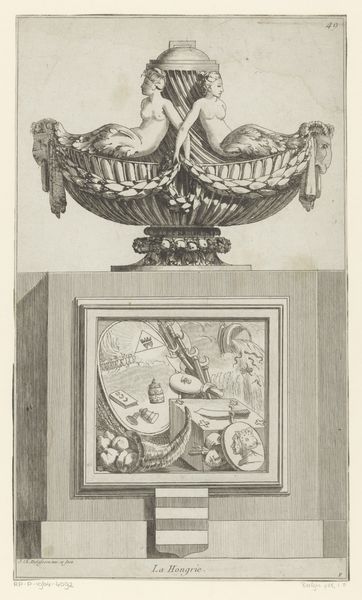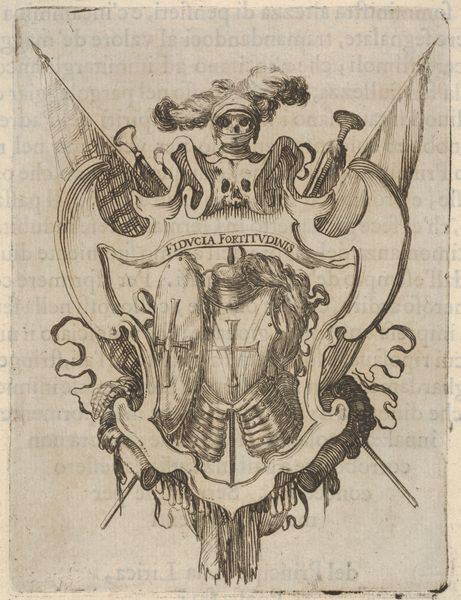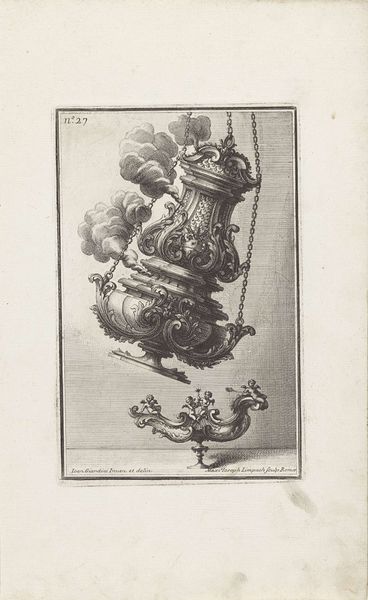
drawing, print, etching, ink, engraving
#
drawing
# print
#
etching
#
ink
#
geometric
#
pen-ink sketch
#
line
#
history-painting
#
academic-art
#
decorative-art
#
engraving
Dimensions: height 381 mm, width 234 mm
Copyright: Rijks Museum: Open Domain
Curator: Let’s spend some time with this drawing, etching, and engraving on paper titled "Italie", created between 1768 and 1771 by Jean Charles Delafosse, which currently resides here at the Rijksmuseum. What’s your first reaction to this intriguing piece? Editor: Overwhelming! My eye bounces all over. It feels… celebratory and yet oddly formal. Like an ode to a country using a language I can't quite decipher, but it makes me wonder, who is it really for? Curator: Indeed. Delafosse was known for his decorative designs. Considering its period, and academic artistic style, "Italie" likely functioned within a network of artists, patrons, and institutions invested in maintaining certain representations of power. The work depicts trophies that symbolize Italy’s strengths. What cultural narratives can we uncover, particularly looking at its ornamental style? Editor: It seems rife with symbolism – there are papal keys and other religious icons; but also a circular vignette above illustrating some sort of seaside battle. I notice that both are positioned atop a sculpted support, which is decorated in garlands. This mix suggests both spiritual and secular forms of power converging in one vision of Italian identity. However, there are clearly elements, such as classical military figures that actively marginalise parts of the population. How are women and minorities depicted, for example? Curator: Precisely! The piece showcases Italy through a lens privileging certain narratives—mainly those tied to religious authority, military strength, and perhaps even artistic legacy, suggested by the open book. The torch, book, and nautical elements appear as signifiers in some imagined historical narrative. Italy as an intersection of political powers becomes literally ornamental, a kind of display piece, if you will. Editor: Absolutely. It makes you consider what Italy means at the time, in this case what is considered a visual delight which communicates not only Italian cultural and artistic output, but a message that could only be constructed by overlooking marginalized members of society. A visual message made by those in positions of power to communicate particular cultural beliefs. I would love to spend more time analysing this to gain even more understanding of the historical representation of Italy during that time. Curator: A great reminder that seemingly simple decorative pieces like these often encapsulate incredibly complex negotiations of power, representation, and cultural identity. Editor: Indeed. Thank you, it makes for powerful and pertinent cultural consideration!
Comments
No comments
Be the first to comment and join the conversation on the ultimate creative platform.
